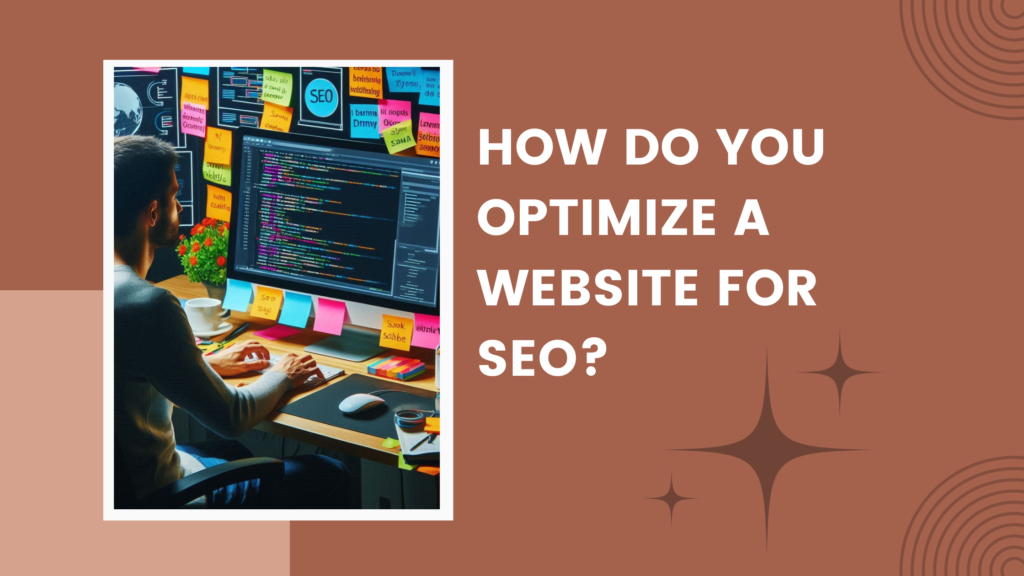Optimizing a website for SEO (Search Engine Optimization) is crucial for driving organic traffic, improving search engine rankings, and ultimately growing your online presence. Here’s a comprehensive guide on how to effectively optimize your website for SEO, focusing on key strategies that are both user-friendly and search engine-friendly.
1. Conduct Thorough Keyword Research
Keyword research is the foundation of SEO. Start by identifying the search terms and phrases that your target audience is using to find products, services, or information related to your niche. Tools like Google Keyword Planner, SEMrush, or Ahrefs can help you discover high-volume, low-competition keywords. Once you’ve identified these keywords, integrate them naturally into your website content, including titles, headings, meta descriptions, and body text. Avoid keyword stuffing, as it can harm your rankings and disrupt the user experience.
2. Create High-Quality, Relevant Content
Content is king in the world of SEO. Search engines prioritize websites that provide valuable, relevant, and up-to-date content. Create content that answers your audience’s questions, solves their problems, or fulfills their needs. This could be in the form of blog posts, how-to guides, videos, infographics, or case studies. Incorporate your target keywords naturally within the content while ensuring that it flows naturally and provides genuine value to the reader. Engaging content not only attracts visitors but also encourages them to stay longer on your site, reducing bounce rates.
3. Optimize On-Page Elements
On-page SEO involves optimizing various elements on your website to make it more search engine-friendly. Key on-page elements include:
- Title Tags: Ensure each page has a unique, descriptive title tag that includes your target keyword and is under 60 characters.
- Meta Descriptions: Write compelling meta descriptions (under 160 characters) that summarize the content and encourage clicks.
- Headings (H1, H2, H3): Use headings to structure your content. The H1 tag should contain the main keyword, while H2 and H3 tags help organize the content into sections.
- Alt Text for Images: Describe your images using alt text, incorporating keywords where relevant. This helps search engines understand what the image is about and improves your chances of appearing in image search results.
- URL Structure: Create clean, descriptive URLs that include your target keywords. Avoid using long, complex URLs with unnecessary numbers or symbols.
4. Improve Website Speed and Performance
Page speed is a critical ranking factor for search engines and significantly impacts user experience. A slow-loading website can lead to higher bounce rates and lower search rankings. To optimize your site’s speed:
- Compress Images: Use tools like TinyPNG or ImageOptim to reduce image file sizes without compromising quality.
- Enable Browser Caching: This allows visitors to store copies of your website’s pages in their browser, reducing load times on subsequent visits.
- Minimize HTTP Requests: Limit the number of elements on your pages, such as scripts, images, and CSS files, to reduce load times.
- Use a Content Delivery Network (CDN): CDNs distribute your website’s content across multiple servers worldwide, ensuring faster load times for users regardless of their location.
5. Enhance Mobile Responsiveness
With the majority of searches now happening on mobile devices, having a mobile-friendly website is essential. Use responsive design to ensure your site adjusts seamlessly across different screen sizes. Google’s Mobile-Friendly Test tool can help you identify areas for improvement. A mobile-optimized site not only improves user experience but also boosts your search engine rankings, as Google prioritizes mobile-first indexing.
6. Build High-Quality Backlinks
Backlinks from reputable websites signal to search engines that your site is credible and authoritative. Focus on earning backlinks from relevant, high-authority websites in your industry. You can do this by:
- Guest Blogging: Write valuable content for other websites in exchange for a backlink to your site.
- Influencer Outreach: Collaborate with influencers in your niche who can link to your site in their content.
- Creating Shareable Content: Develop content that naturally attracts links, such as infographics, original research, or in-depth guides.
7. Monitor and Analyze Your SEO Performance
SEO is an ongoing process, so it’s important to regularly monitor your website’s performance using tools like Google Analytics and Google Search Console. Track key metrics such as organic traffic, bounce rates, conversion rates, and keyword rankings. Use this data to identify areas for improvement and adjust your strategy accordingly.
Conclusion
Optimizing your website for SEO requires a combination of strategic planning, content creation, and technical improvements. By focusing on user experience, quality content, and adherence to SEO best practices, you can significantly improve your website’s visibility and search engine rankings. Remember, SEO is not a one-time task but an ongoing effort to ensure your site remains competitive in search results.

